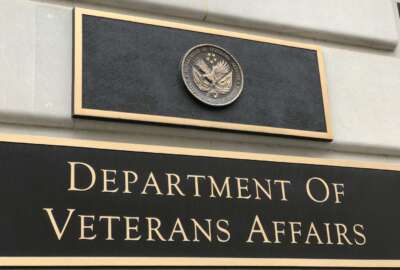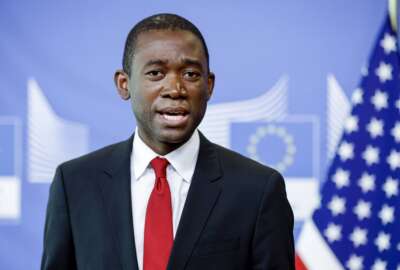FEBs seek to offer resources to more federal employees
The Office of Personnel Management sees an opportunity to extend FEBs’ reach, more than doubling how many federal employees can access the program.
Federal Executive Boards are looking to expand their offerings to even more federal employees working outside of the Washington, D.C., region.
After reporting successful training sessions, recruitment events and cost savings in the last fiscal year, the Office of Personnel Management sees an opportunity to extend FEBs’ reach to more than double the number of feds who can access the program’s resources.
The expansion would now be possible, after the FEB program went a restructuring, as well as recently developing a new funding model, OPM said.
“This transformation is designed to enhance the FEBs’ effectiveness in fostering interagency collaboration, better serve the 85% of federal employees located outside Washington, D.C., and expand FEBs’ reach to areas with significant federal activity but no FEB presence,” OPM wrote in its fiscal 2023 FEB annual report, published earlier this month.
Federal Executive Boards have been in operation for more than 60 years. Working in 28 different locations across the country, boards of senior federal executives regularly collaborate to discuss goals for improving the federal workforce, and host various federal workforce events in their area. FEBs also help coordinate plans for national or local emergencies, such as tornadoes, hurricanes and even snow days.
The FEB program has recently shifted — it’s now housed within OPM in an effort to centralize its operations. There is also a new funding model for the program. In the past, FEBs relied only on voluntary funding from regional agencies. But now that agencies have authorization to contribute more funding in support of the FEB program, more options are opening up with likely more predictable and stable resources.
“By having the FEBs centralized, we’re making our operations more unified and more efficient, which then increases the collaboration. And it really positions us to stay focused on key goals,” Kelly DeGraff, OPM’s deputy associate director for FEBs, said in an interview earlier this year. “The centralized oversight also makes us more accountable and transparent, which really then improves our overall responsiveness to both government agencies and to the public.”
How FEBs aim to support federal employees
Although the vast majority of the federal workforce is located outside the D.C. area, various reports and surveys have found that feds located far away from agency headquarters often experience lower engagement and satisfaction in their jobs. Agencies also have a more difficult time recruiting and retaining employees in far-reaching regions, such as Alaska and Hawaii.
For example, in OPM’s results of the 2024 Federal Employee Viewpoint Survey, federal employees located in the “Eastern” FEB — or those typically closer to agency headquarters — had higher engagement scores than those working in the areas covered by the “Western” FEB, who are geographically farther from headquarters.
But OPM, as well as the Government Accountability Office, view the FEB program as an opportunity to bridge that gap — and boost federal recruitment and retention nationwide.
“FEBs serve a vital role bridging communication and engagement from Washington to the rest of the country and offer an access point for public federal engagement,” OPM Acting Director Rob Shriver said in the FEB annual report.
FEBs may be able to support field office employees, who scored about 10% lower on FEVS than headquarters employees for how satisfied they feel with the recognition they get from their agencies. For example, as part of the FEB program, agencies offer awards to federal employees. During 2023, FEBs gave out 735 awards to recognize feds’ work. If the FEBs are able to extend their reach, that may serve as an opportunity to recognize even more feds for their work.
Additionally, GAO said in a recent report that FEBs are in a unique position to foster and improve collaboration between regional federal offices and many agency headquarters locations.
Leadership training, donation drives and more
Federal employees in different parts of the country have also attended FEB-hosted workshops, trainings and employee development programs — covering leadership skills, how to apply for retirement, alternative dispute resolutions and more. In the last fiscal year, OPM reported that learning opportunities, mentoring programs, awards programs and other training sessions through FEBs led to an estimated $7.8 million in cost savings. The training programs extended to more than 30,000 federal employees.
Looking ahead, “the FEB program will implement a new regional model to extend the scope of the FEB mission and more than double the number of federal employees eligible to access FEB programming,” OPM said. “The regional model also increases the number of executives engaged with FEBs.”
Part of the current training opportunities include leadership development options for early-career workers. In one example, the FEB in Cleveland, Ohio, sponsored a leadership development program for entry-level employees. Program participants learned about strategies to improve performance, communications, conflict management and time management.
“By leading comprehensive leadership development programs, the FEBs demonstrate deep commitment to cultivating a culture of continuous growth and learning,” OPM said in its report. “These programs equip individuals with essential skills and knowledge, as well as reinforce the value of public service.”
Additionally, OPM reported that the national FEB team hosted several federal retirement sessions, reaching over 17,000 employees to guide them through the Thrift Savings Plan, Social Security and the Federal Employees Retirement System.
Along with training opportunities, FEBs across the country also regularly conduct emergency exercises and trainings, particularly in collaboration with the Department of Homeland Security and the General Services Administration. The efforts include coordinating interagency emergency exercises, continuity webinars and active threat trainings, OPM said.
FEBs are also a major supporter of coordination efforts for the annual Combined Federal Campaign, which lets feds donate to charitable organizations around the world. OPM reported that CFC campaigns in areas where FEBs operate collectively raised $30.3 million in donations — comprising nearly 80% of the campaign’s total collections last year.
Copyright © 2024 Federal News Network. All rights reserved. This website is not intended for users located within the European Economic Area.
Drew Friedman is a workforce, pay and benefits reporter for Federal News Network.
Follow @dfriedmanWFED






